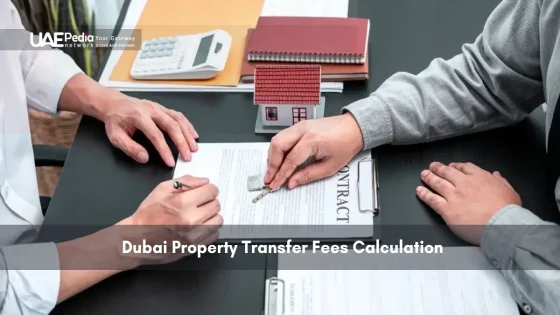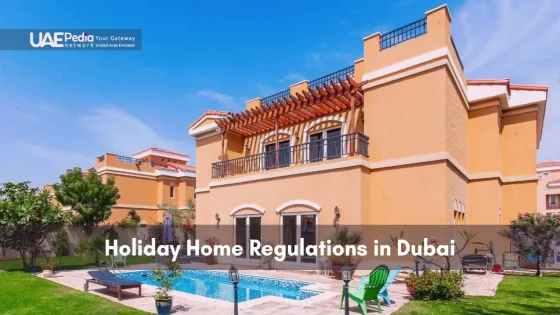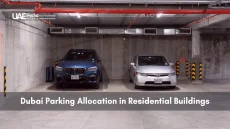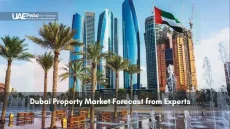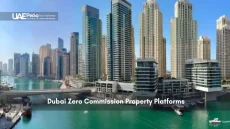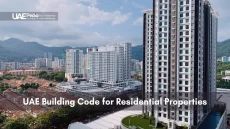What if owning property abroad could unlock more than just rental income—but a path to new opportunities? For UAE-based buyers eyeing American soil, navigating the visa landscape is as crucial as choosing the right neighborhood. The U.S. offers investment-based immigration routes that turn property holdings into potential stepping stones for residency.
Recent shifts show growing interest in cross-border investment, particularly from Gulf investors. Programs like the EB-5 visa link capital commitments to green card eligibility—but the rules aren’t one-size-fits-all. Understanding thresholds, timelines, and legal nuances makes all the difference between a smooth process and unexpected roadblocks.
Here’s what you need upfront: market trends favor mixed-use developments in cities like Miami or Austin, while regional centers streamline compliance. Yet success starts with clarity on eligibility requirements—from minimum capital to job creation metrics. Think of it as building a foundation: every detail matters.
Real Estate Investor Visa Requirements in the United States comprise two primary pathways: the E-2 Treaty Investor visa and the EB-5 Immigrant Investor visa. The E-2 option requires a substantial, but unspecified, capital commitment in an operational enterprise and active management, offering renewable stays without a direct path to permanent residency. The EB-5 route mandates a minimum investment of $800,000 in a Targeted Employment Area or $1.05 million elsewhere, with verified job creation of at least ten full-time positions. Targeted Employment Areas reduce the capital threshold by 20% and prioritize projects that deliver measurable regional economic impact.
Applicants must submit an I-526E petition demonstrating lawful source of funds, detailed business plans, and risk-at-risk capital deployment. Conditional residency follows petition approval, after which candidates file I-829 petitions to lift conditions by proving job creation metrics. Investors may choose direct project control—overseeing operations and hires—or partner with USCIS-approved regional centers that manage compliance, reporting, and indirect job calculations. Stringent documentation, from bank records to employment projections, and engagement with experienced immigration counsel are critical to navigating timelines, regulatory requirements, and potential process delays.
- Property ownership can align with immigration goals through structured programs
- Current trends emphasize strategic locations and compliant partnerships
- Clarity on eligibility criteria prevents costly missteps
Introduction to Investment-Based Immigration and Visa Paths
Imagine trading your morning karak for a New York latte—permanently. The U.S. offers two main roads for property owners: temporary stays (E-2) or green card pathways (EB-5). Let’s break them down like we’re comparing camel rides to sports cars.
| Feature | E-2 Treaty Investor | EB-5 Immigrant Visa |
|---|---|---|
| Investment Threshold | No fixed minimum | $800k–$1.05M* |
| Residency Outcome | Renewable 5-year stays | Conditional → Permanent Green Card |
| Key Focus | Active business management | Job creation through capital infusion |
Lower in Targeted Employment Areas (TEAs)—rural zones or high-unemployment regions.
Here’s the golden ticket: A rock-solid business plan transforms property holdings into EB-5 eligibility. Think mixed-use developments in Austin or senior housing near Miami—projects that create 10+ jobs. TEAs aren’t just map dots; they’re your shortcut to reduced capital demands.
“Location determines leverage. A TEA-approved project cuts your initial outlay by 20%—but documentation is key.”
Ready for the process? Start with an I-526E petition. Then comes conditional residency, followed by proving job creation. We’ll unpack each step in this guide—like having a friend whisper USCIS secrets over Arabic coffee.
Next up: How to structure your enterprise so Uncle Sam nods approval. Spoiler: Regional centers handle heavy lifting, but direct control has perks too. Let’s explore.
The EB-5 program mandates a minimum investment of $1,050,000 for standard projects or $800,000 in Targeted Employment Areas to qualify.Ref.: “Rahul Gudise (2025). EB5 Visa: Investment Requirements & Green Card Process. Gale Visa.” [!]
Navigating Real Estate Investor Visa Requirements
Picture this: Your capital isn’t just parked—it’s paving roads, building complexes, and employing locals. The EB-5 program turns financial commitments into immigration pathways, but success hinges on two non-negotiables: risk and impact. Funds must stay “at-risk” throughout the process—no guaranteed returns or passive holdings. Think of your dollars as seeds planted in fertile soil, not locked in a vault.
Job creation is the heartbeat of eligibility. Every dollar should pulse toward full-time positions—think construction crews for a Houston apartment complex or staff at a Nevada senior living facility. Projects like mixed-use developments or renewable energy hubs often hit the sweet spot, blending profitability with community needs.
“Think of your funds as a live wire—they need to actively spark growth, not sit idle.”
Location strategy separates savvy moves from missed opportunities. Targeted employment areas (TEAs)—regions with higher unemployment or rural status—slash investment thresholds by 20%. Imagine choosing between downtown L.A. (generic zone) versus revitalizing a Mississippi manufacturing town (TEA). The latter reduces your initial commitment while amplifying social impact.
Your roadmap? Two primary options:
- Direct control: Hands-on management of a development
- Regional centers: Partnering with approved entities handling compliance
Both paths demand meticulous planning, but regional centers often simplify job tracking. Next, we’ll explore how to structure your enterprise—whether you’re drafting blueprints or delegating to experts.
USCIS mandates that EB-5 investment capital remain at risk throughout the conditional residence period, requiring funds to be subject to potential loss rather than guaranteed returns.Ref.: “Rakesh Patel & Jacqueline Trevino (2024). Understanding the Concept of ‘At-Risk’ in EB-5 Investments. Patel Law Group.” [!]
Understanding the EB‑5 Visa for Real Estate Investments
Picture swapping Dubai’s skyline for a Miami high-rise—permanently. The EB-5 visa turns property ventures into green card opportunities, but only if you play by Uncle Sam’s rulebook. Here’s how it works: inject capital into U.S. projects that create jobs, and you unlock a path to residency.
| Investment Type | Minimum Capital | Job Creation |
|---|---|---|
| Standard Projects | $1.05M | 10+ full-time roles |
| Targeted Employment Area (TEA) | $800k | Same requirement |
TEAs—think rural towns or high-unemployment zones—act as golden tickets. They slash initial costs while boosting community impact. A recent Houston mixed-use development, for example, paired luxury condos with affordable retail spaces, employing 14 locals while meeting EB-5 investment criteria.
“Smart money flows where needs meet opportunity. TEAs let you stretch dollars while leaving lasting footprints.”
Foreign nationals often partner with regional centers to simplify compliance. These hubs handle job tracking and paperwork, letting you focus on strategic choices—like acquiring a Phoenix apartment complex or funding a solar farm in Nevada.
Ready to plant roots? Start with an I-526E petition and proof of lawful funds. Then, watch your capital build towers—and futures—stateside.
Read More:
Overcoming the New Commercial Enterprise Challenge
What if your next property purchase could do more than secure a roof—it could build a bridge to U.S. residency? The EB-5 program demands more than passive holdings. Your investment must fuel a new commercial enterprise—a business that actively creates jobs and drives growth.
Defining a New Commercial Enterprise
Under EB-5 rules, simply buying a Miami condo or Texas ranch won’t cut it. A qualifying enterprise involves launching or restructuring a U.S. operation. Think hotels adding dining venues, or warehouses converted into coworking hubs. One recent case saw a Dubai family transform a vacant Miami building into a boutique hotel with a rooftop café—turning bricks into jobs.
Innovative Structures to Meet EB‑5 Criteria
Creativity unlocks compliance. Pair direct ownership with operational roles—like merging a Phoenix apartment purchase with a property management firm. A robust business plan maps this blend, showing how your capital fuels payroll and community impact.
“Treat your property as a business canvas. Paint with services, amenities, or partnerships that employ locals.”
Take inspiration from a Texas ranch turned eco-tourism hub. Investors bought land but also funded trail guides, event staff, and a farm-to-table restaurant. This structure met the 10-job threshold while aligning with regional needs.
Your blueprint? Start with a plan that turns assets into active engines. Whether renovating historic buildings or launching tech hubs, every dollar should spark opportunity.
Noncompliance by EB-5 entities—such as regional centers or new commercial enterprises—with updated policy manual guidelines can incur sanctions (suspension, debarment, termination), potentially jeopardizing investor eligibility. Ref.: “Kirsten Crovello & Jennifer Hermansky (2024). What investors need to know about Immigration Services’ updated policy manual on EB-5 entities. Reuters.” [!]
Addressing the Job Creation Requirement
Building bridges starts with bricks—and jobs. For EB-5 hopefuls, creating ten full-time roles isn’t just paperwork; it’s about planting roots in communities. Let’s explore how smart planning turns payrolls into pathways.
Strategies to Generate 10 Full-Time Jobs
| Industry | Approach | Roles Created |
|---|---|---|
| Hospitality | Hiring staff for hotels, restaurants, and maintenance | 12–15 positions |
| Construction | Direct hiring of crews for development projects | 10+ temporary → permanent roles |
| Mixed-Use | Combining retail, residential, and facility management | 14–18 hybrid positions |
A Dubai family recently transformed a Texas ranch into an eco-resort—training locals as guides and chefs. Their business model created 12 steady paychecks while meeting EB-5 criteria.
“Job creation isn’t a checkbox—it’s a legacy. Design roles that outlive your application timeline.”
Integrating Business Operations for Job Creation
Think beyond brick-and-mortar. Pair property ownership with services like landscaping, security, or event planning. One Miami mixed-use development added an in-house café and cleaning team—boosting employment while streamlining operations.
- Hire locally: Partner with vocational schools for trained workers
- Layer services: Convert vacant spaces into revenue-generating amenities
- Track early: Use payroll software to document hours from day one
Your capital builds more than buildings—it crafts careers. With creativity and community focus, those ten roles become stepping stones for families and your future alike.
Partnering with USCIS-approved EB-5 regional centers enables investors to include indirect and induced jobs—such as supplier and construction roles—toward the 10-job requirement, maximizing project capital-raising capacity. Ref.: “Congressional Research Service (2025). Overview of the EB-5 Immigrant Investor Program. Congress.gov.” [!]
Structuring Your Investment in U.S. Real Estate
Ever wondered how to turn bricks and mortar into both profit and pathways? Your approach—direct ownership or blended ventures—shapes everything from cash flow to compliance. Let’s unpack options like you’re choosing between a solo road trip or group caravan.
Direct Ownership Versus Business Integration
| Factor | Direct Purchase | Business Integration |
|---|---|---|
| Control Level | Full decision-making | Shared strategy with partners |
| EB-5 Alignment | Requires added job creation | Built-in employment through services |
| Scalability | Limited to property value | Expands via multiple revenue streams |
Buying a Phoenix apartment complex outright offers simplicity. But pairing it with a property management firm? That combo weaves business operations into your holdings—turning maintenance crews into job-creation gold.
“Treat your purchase as a launchpad. Layer services like co-working spaces or rooftop dining to multiply impact.”
Location plays double duty here. A Miami retail strip in a TEA zone cuts capital needs while boosting community ties. Leasing might save upfront costs, but ownership anchors long-term growth—especially when paired with tax incentives.
- Map local demand: Does the area need housing, retail, or hybrid spaces?
- Audit operational costs: Will hiring staff align with EB-5 timelines?
- Consult early: Regional centers can fast-track compliant structures
Whether you’re eyeing Dallas townhomes or a Nevada solar farm, your blueprint should balance returns with residency goals. Next, we’ll explore how to pivot strategies if markets shift mid-process.
In Q1 FY2024, 95% of EB-5 petitions were filed through the Regional Center Program (Form I-526E), highlighting its overwhelming preference among investors. Ref.: “GreenCardByInvestment.com (2024). Q1 FY2024 EB-5 Data: Strong Processing Continues. GreencardByInvestment.com.” [!]
Transitioning Investment Strategies for UAE Property Owners
Imagine blending Abu Dhabi’s golden sands with Chicago’s city lights—not just as a visitor, but through strategic ownership. For Emirati entrepreneurs, shifting from passive holdings to active U.S. ventures requires cultural agility. Where Gulf markets often prioritize luxury towers, American opportunities thrive on community impact and job creation.
| Focus | UAE Approach | U.S. Strategy |
|---|---|---|
| Community Impact | High-end developments | Mixed-use TEA projects |
| Employment Goals | Minimal local hiring | 10+ full-time roles |
| ROI Horizon | Short-term gains | 5–7 year timelines |
Take Dubai’s capital flowing into a Dallas senior living complex. By adding an onsite clinic and café, investors met EB-5 job targets while addressing regional needs. TEAs—like rural Nebraska or Detroit’s revival zones—cut initial costs by 20%, mirroring Dubai’s free zone incentives but with social dividends.
“Think of your Emirati portfolio as a launchpad. Layer U.S. ventures that serve neighborhoods, not just balance sheets.”
Key adjustments for success:
- Audit existing assets: Can a vacation home evolve into a managed rental business?
- Partner with regional centers familiar with Gulf investors
- Track metrics like payroll hours from day one—not just ROI
This pivot isn’t about abandoning majlis wisdom—it’s weaving it into Main Street opportunities. Your next property could be the bridge where desert ambition meets American hustle.
Maximizing Your Investment: Regional Centers and Direct Options
Imagine your funds building communities while paving your path to new horizons. When structuring capital for U.S. opportunities, two roads emerge: partnering with EB-5 regional centers or steering projects directly. Each path offers distinct benefits—like choosing between a guided tour and a solo adventure.
Benefits of EB‑5 Regional Centers
Think of regional centers as your compliance co-pilots. These USCIS-approved entities handle job tracking, documentation, and reporting—freeing you to focus on strategy. For example, a Texas renewable energy hub recently streamlined 14 roles through subcontractors and operational staff, satisfying EB-5 criteria without micromanagement.
- Pre-vetted projects reduce due diligence burdens
- Indirect job calculations (construction, suppliers) count toward targets
- Geographic diversification spreads risk across markets
“Regional centers turn complex rules into checklists. You bring capital; they handle the heavy lifting.”
Choosing the Right Investment Model
Direct control suits hands-on builders. Want to convert a Nevada warehouse into a tech incubator? You’ll oversee hires and budgets—ideal for those craving influence. But regional partnerships shine for passive participants, offering turnkey solutions.
| Factor | Regional Center | Direct Model |
|---|---|---|
| Time Commitment | Low (quarterly updates) | High (daily oversight) |
| Job Flexibility | Direct + indirect roles | Direct hires only |
| Exit Strategy | 5–7 year timelines | Customizable |
Evaluate projects like a Miami mixed-use development that blended retail and residential spaces. Their regional center partnership achieved full compliance within 18 months—proving collaboration can accelerate outcomes.
Direct EB-5 petitions (Form I-526) face denial rates around 30% and average adjudication times of 57 months, whereas regional center petitions (Form I-526E) carry denial rates near 3%. Ref.: “Kristen Burke (2025). USCIS Releases EB-5 Adjudication Statistics. EB-5 Insights.” [!]
Exploring Visa Alternatives: The E‑2 Treaty Investor Option
Ever thought your U.S. property could double as a launchpad for temporary residency? For entrepreneurs from treaty nations, the E-2 option offers a faster route than EB-5—no green card lottery, just strategic business ties. Think of it as a golden ticket for active managers ready to roll up their sleeves.
Key Requirements for E-2 Property Investors
Unlike passive holdings, E-2 eligibility demands hands-on involvement. Your capital must fuel an operational enterprise—like renovating a Florida boutique hotel or launching a Texas food truck park. The investment should be “substantial,” typically 50%+ of the project’s total value.
| Factor | E-2 Visa | EB-5 Visa |
|---|---|---|
| Minimum Capital | No fixed amount | $800k+ |
| Residency Type | Renewable (5-year cycles) | Permanent after conditions |
| Operational Role | Active management required | Passive allowed |
Pros? Faster processing (3–6 months) and lower upfront costs. Cons? No direct path to citizenship. A Dubai family recently used E-2 to operate a Nevada glamping site—hiring 8 staff while renewing their status twice.
“E-2 is perfect for serial entrepreneurs. It rewards hustle, not just checkbooks.”
Curious how this aligns with your existing plans? Check UAE residency policies to ensure dual commitments remain compliant. Whether you’re eyeing Arizona rentals or Colorado ski chalets, structure ventures that blend profit with purpose.
Steps to Successfully Apply for Your U.S. Green Card Through Real Estate Investment
Your journey from property owner to U.S. resident begins with a single folder—filled not just with papers, but possibilities. Assembling the right documents turns dreams into actionable plans. Let’s map your path like we’re planning a desert-to-city road trip.
Preparing Essential Documentation and Business Plans
Think of your paperwork as a blueprint. Every permit, contract, and financial record must show how your funds spark growth. Start with a business plan detailing job creation timelines and revenue streams. Recent approvals highlight projects like Phoenix co-living spaces that pair housing with coworking amenities.
| Document Type | Purpose | Notes |
|---|---|---|
| I-526E Petition | Prove lawful capital and project viability | Include 5-year financial projections |
| Business Plan | Outline job creation strategy | Align with TEA requirements if applicable |
| Bank Records | Verify fund sourcing | Trail transfers back 2+ years |
“Paperwork is your story. Make USCIS root for your success by showing community impact.”
Selecting an Experienced Immigration Attorney
Choosing legal counsel is like picking a travel guide—they’ll navigate rocky terrain so you enjoy the view. Look for attorneys with 50+ EB-5 approvals and TEA expertise. Ask how they’ve resolved issues like delayed permits or job shortfalls.
- Review case studies: Have they handled projects similar to yours?
- Confirm regional center partnerships: Do they simplify compliance?
- Check responsiveness: Can they explain I-829 timelines in plain terms?
Once filed, track your application like flight status—regular updates prevent surprises. Funds must stay at risk until conditions lift, so avoid fixed returns. Celebrate milestones: approval notices, conditional residency, and finally—that green card landing.
Failure to file Form I-829 within the 90-day window before the second anniversary of conditional status results in automatic termination of permanent resident status and potential deportation. Ref.: “MyAttorneyUSA.com (2025). Removal of Conditions for EB-5 Immigrant Investors. 8 CFR 216.6(a)(5).” [!]
Final Considerations for a Smooth Immigration Journey
Charting your course across borders requires more than a map—it demands foresight and trusted allies. For families pursuing opportunities in the United States, aligning financial strategies with immigration goals unlocks doors to education, community growth, and lasting stability.
Successful ventures blend smart capital placement with local needs—think renovating aging buildings into community hubs or funding renewable energy projects in targeted employment zones. These efforts not only meet program criteria but create jobs for local workers, leaving footprints that outlast paperwork.
Before finalizing plans, partner with legal experts who’ve navigated similar journeys. They’ll spot hidden hurdles in business structures or documentation trails. Regular audits of payroll records and project timelines keep applications moving smoothly.
Check out the below:
The rewards stretch beyond residency. Access to top-tier schools, healthcare networks, and eventual citizenship options transform careful planning into generational advantages. One Dubai-based couple recently secured their children’s college futures through a Miami mixed-use development—proof that vision pays dividends.
Consider this guide your first step—not the final word. With each decision, you’re building bridges between ambition and achievement. Now’s the time to gather your team, review those blueprints, and lay foundations that support both your dreams and the communities you’ll call home.
In designated high-unemployment or rural zones, the EB-5 program requires at least 0,000. This lower threshold helps direct capital to communities needing economic boosts while offering investors a cost-effective path.
Not directly—the EB-5 program demands fresh capital injected into qualifying U.S. projects. However, profits from UAE assets can fund your stateside investment if properly documented through legal channels.
Current processing spans 18–36 months. Regional center projects may offer conditional residency faster, while direct investments often require longer due to business operational proof needed.
Personal residences don’t meet EB-5 criteria unless part of a revenue-generating venture like a rental business that creates jobs. The E-2 treaty option allows smaller hospitality investments if actively managed.
Regional centers pool multiple investors to meet thresholds via indirect roles. For direct investments, contingency plans like hiring contractors or expanding services help safeguard compliance.
Yes! Spouses and unmarried children under 21 gain residency rights. They can study, work, or launch businesses—making it a family gateway to American opportunities.
Centers handle job calculations and project management, reducing your oversight. They’re ideal for passive investors, while direct routes suit hands-on entrepreneurs building bespoke ventures.
Unlike EB-5’s permanent residency, E-2 status requires renewals every 2–5 years. Maintaining active business operations and treaty nationality ensures ongoing eligibility.


